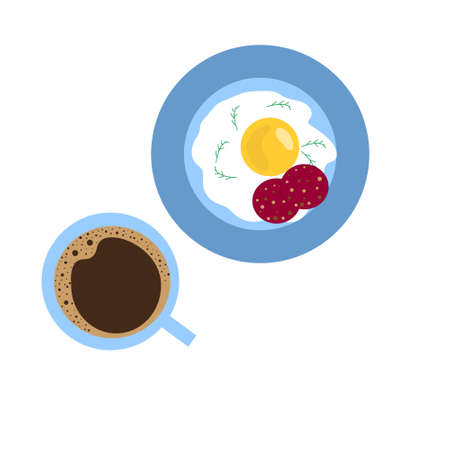Understanding Pour Over Coffee
If you are new to the world of speciality coffee in the UK, pour over brewing is an excellent place to start. This manual brewing method has become increasingly popular among British coffee enthusiasts, thanks to its ability to highlight subtle flavours and aromas that are often lost in traditional brewing techniques. Unlike conventional drip machines or cafetières, pour over coffee involves slowly pouring hot water over ground coffee beans, allowing for precise control over extraction time and temperature. This hands-on process results in a cup with remarkable clarity, balanced acidity, and a clean finish—qualities highly prized by those seeking more than just a morning caffeine fix.
The appeal of pour over coffee lies not only in its nuanced taste but also in the ritual itself. Many UK coffee lovers appreciate the mindful approach it encourages: from selecting freshly roasted beans at local roasteries to perfecting the pouring technique. As the UK’s coffee culture continues to shift towards artisanal methods and traceable origins, pour over brewing stands out as both accessible and rewarding for beginners. Whether you’re looking to elevate your daily brew or simply explore new ways of enjoying coffee at home, understanding the fundamentals of pour over is your first step towards mastering this craft.
Essential Equipment for UK Home Brewers
Getting started with pour over coffee at home in the UK requires some essential kit, but there’s no need to break the bank. The right tools will help you achieve a clean cup, highlight nuanced flavours, and enjoy a bit of British coffee culture from your own kitchen. Here’s a practical guide to the fundamental equipment you’ll need, including terminology and recommendations tailored to UK consumers.
Coffee Grinder
A burr grinder is highly recommended over a blade grinder for consistent particle size, which is crucial for even extraction. Manual hand grinders are popular for their affordability and portability, while electric burr grinders offer convenience for daily use. Look for brands readily available in the UK, such as Wilfa or Baratza.
Pour Over Brewer
The most common pour over brewers in Britain include the Hario V60, Chemex, and Kalita Wave. Each offers subtle differences in brew profile and method:
| Brewer | Common Sizes (UK) | Main Features | Best For |
|---|---|---|---|
| Hario V60 | 01, 02 | Cone-shaped; spiral ridges; paper filters | Bright, clean cups; single cups or small batches |
| Chemex | 3-cup, 6-cup | Thicker filters; glass carafe | Smooth body; making multiple cups at once |
| Kalita Wave | 155, 185 | Flat-bottomed; wave filters | Consistent extraction; forgiving for beginners |
Kettle (Gooseneck Preferred)
A gooseneck kettle gives you precise control over your pouring technique—a must for even saturation of the grounds. Electric gooseneck kettles with variable temperature control are increasingly available through UK retailers such as John Lewis or Currys. If you’re on a budget, a stovetop gooseneck kettle works well too.
Coffee Scale with Timer
To ensure consistency and repeatability, a digital scale with a built-in timer is invaluable. This helps you accurately measure both your coffee dose and water weight—essential steps towards mastering your perfect brew ratio.
Papers & Filters: Sizing and Availability in the UK
Make sure you select filters that match your brewer. Many specialist shops like Hasbean or Pact Coffee stock V60 and Chemex papers in sizes suited for UK brewers. It’s worth noting that some supermarket chains now carry these filters as well.
With this set-up—a quality grinder, your chosen pour over device, gooseneck kettle, reliable scale, and the correct filter papers—you’ll be well on your way to enjoying café-standard coffee at home. In the next section, we’ll guide you through sourcing fresh beans suitable for pour over brewing in the UK market.

3. Choosing the Right Coffee Beans
When embarking on your first pour over journey in the UK, selecting the right coffee beans is a crucial step that defines your brewing experience. Opting for specialty coffee ensures you’re working with beans that have been meticulously sourced and roasted for quality and flavour complexity. In the UK, supporting local roasters not only helps sustain independent businesses but also offers fresher options and unique profiles tailored to British preferences.
Supporting Local UK Roasters
Exploring your neighbourhood or regional roasters allows you to engage with the thriving UK coffee scene. Many local roasters are committed to ethical sourcing and transparent practices, often highlighting traceability from farm to cup. Visiting their shops or browsing their websites provides opportunities to sample single origin offerings or expertly crafted blends designed with pour over methods in mind.
Understanding Roast Profiles for Pour Over
The roast profile significantly influences the final cup, especially with pour over brewing which accentuates subtle flavours and aromas. For most UK palates, light to medium roasts are ideal—they preserve origin characteristics such as bright acidity, floral notes, and fruity undertones that shine through with manual brewing techniques. While dark roasts remain popular in traditional settings, they can sometimes overpower the nuanced qualities that make pour over so distinctive.
Advice for Selecting Your First Beans
Start by choosing beans labelled as suitable for filter or pour over; these are typically roasted lighter and will yield a cleaner cup. Ask your local roaster for recommendations based on your taste preferences—whether you favour vibrant citrus, gentle florals, or a mellow chocolate finish. Experimenting with origins from Africa, Central America, or even emerging British-grown coffees can help you discover what best suits your palate while supporting the ever-evolving UK coffee landscape.
4. Step-by-Step Brewing Method
Mastering the pour over method doesn’t require fancy kit or years of experience—just a bit of patience and attention to detail. Here’s a straightforward brewing process, using UK measurements and tips tailored for first-time brewers.
What You’ll Need
| Equipment | Details |
|---|---|
| Coffee dripper (e.g. V60) | Ceramic or plastic, size 01 or 02 |
| Filter papers | Suited to your dripper type |
| Kettle (preferably gooseneck) | For controlled pouring |
| Digital scale (grams) | Essential for consistency |
| Timer or stopwatch | Your phone works fine |
| Mug or carafe | To collect the brew |
| Freshly ground coffee beans | Medium grind, similar to granulated sugar |
| Filtered water (ideally soft) | Avoid hard tap water where possible |
The Brewing Steps (for One Cup)
- Measure Your Coffee and Water: For a classic UK cup (approx. 250ml), start with 15g of coffee and 250ml of water. Adjust the ratio to taste, but a common starting point is 60g coffee per litre of water.
- Set Up Your Equipment: Place your dripper on your mug or carafe. Insert a filter paper and rinse it thoroughly with hot water—this removes any papery taste and preheats your brewer.
- Add Ground Coffee: Tip your freshly ground coffee into the filter, gently shaking to level the bed.
- Bloom: Start your timer. Pour just enough hot water (about twice the weight of the coffee, so roughly 30g) to saturate all grounds evenly. Let it ‘bloom’ for 30-40 seconds as gases escape—this step brings out sweetness in lighter roasts often favoured in UK specialty shops.
- Main Pour: After blooming, slowly pour the remaining water in steady circles, keeping the water level consistent but avoiding overfilling. Aim for a total brew time of 2:30–3:00 minutes.
- Savour: Once the dripping slows to a stop, remove the dripper. Give your brewed coffee a gentle swirl and taste before adding milk or sugar—many UK drinkers find pour over’s clarity best appreciated black.
Troubleshooting Tips for UK Beginners
| Brew Issue | Possible Cause & Solution |
|---|---|
| Brew tastes sour/weak | Coffee under-extracted; try finer grind or slower pour. |
| Brew tastes bitter/overpowering | Coffee over-extracted; use coarser grind or speed up pouring. |
| Takes too long to brew (>4 min) | Grind may be too fine; adjust coarser next time. |
| Brew is watery/thin-bodied | Add more coffee or reduce water slightly. |
Quick Reference Brew Ratio Table (UK Units)
| Cups Brewed | Coffee (g) | Water (ml) |
|---|---|---|
| 1 cup (mug) | 15g | 250ml |
| 2 cups (carafe) | 30g | 500ml |
| 3 cups (sharing pot) | 45g | 750ml |
This accessible approach will help you confidently brew your first pour over at home, perfectly tailored for British kitchens and preferences.
5. Troubleshooting Common Issues
Even with careful preparation, your first few pour overs might not taste quite as you expect. UK home brewers often encounter a handful of typical challenges—fortunately, most can be resolved with a few technical tweaks and an understanding of local conditions.
Water Quality: The British Challenge
One of the most common issues in the UK is water quality. Much of the country has hard water, rich in minerals like calcium and magnesium. While some mineral content is beneficial for coffee extraction, excessive hardness can mute flavours or make your cup taste flat.
Solution: Use filtered water to reduce unwanted mineral content. Consider investing in a jug filter or using bottled spring water with balanced mineral composition, aiming for total dissolved solids (TDS) between 75-150 ppm for optimal extraction and flavour clarity.
Grind Size Adjustments
If your pour over tastes bitter or overly strong, your grind might be too fine; if it’s weak or sour, it could be too coarse.
Solution: Start with a medium grind—similar to granulated sugar—and adjust incrementally. In the typically humid British climate, beans may absorb extra moisture, so you might need slightly coarser settings than recipes from drier regions suggest. Always grind fresh for each brew to maintain consistency and aromatic integrity.
Brewing Time Troubles
Another frequent issue is inconsistent brewing time—either your coffee drips through too quickly, resulting in under-extraction, or stalls and takes too long, leading to bitterness.
Solution: If brew time is under two minutes, use a finer grind; if it exceeds four minutes, try a coarser grind. Check that your pour rate is steady and avoid overloading your filter paper with grounds.
Taste Imbalances: Sourness & Bitterness
Sourness indicates under-extraction (not enough flavour pulled from the grounds), while bitterness points to over-extraction (too much extracted).
Solution: For sour notes, extend brew time slightly or use a finer grind; for bitterness, shorten brew time or use a coarser grind. Always ensure even saturation during pouring and avoid letting grounds dry out mid-brew.
Cultural Consideration: Adapt Your Recipe
Coffee preferences across the UK can vary regionally—some prefer a lighter, more acidic profile while others enjoy richer, full-bodied cups. Don’t be afraid to adapt your ratios and techniques based on your taste and local tap water characteristics. With patience and mindful adjustments, you’ll soon master a pour over tailored perfectly for the British palate.
6. Enhancing Your Pour Over Experience
Once you’ve mastered the fundamentals of pour over brewing, it’s time to elevate your daily cup by making it uniquely yours. Here are some expert tips for personalising your brew and embracing pour over coffee in a distinctly British way.
Personalising Your Brew
Every palate is unique, so don’t hesitate to experiment with variables like grind size, water temperature, and brew ratio. For those who prefer a brighter, fruitier cup, try a slightly coarser grind and lower brewing temperature (around 90°C). If you enjoy richer, fuller-bodied flavours reminiscent of classic British teas, use a finer grind and allow for a longer extraction time. Keep notes of each adjustment—this will help you hone in on your perfect cup over time.
Exploring Milk Alternatives
While traditional black pour over coffee showcases the nuanced flavours of specialty beans, many in the UK enjoy their brew with a splash of milk or dairy alternative. Oat milk, increasingly popular across Britain, offers a creamy texture without overpowering the coffee’s delicate notes. For those who prefer nutty undertones, almond or hazelnut milks can provide an interesting twist. Always add milk after brewing to preserve clarity and balance in your cup.
Enjoying Your Pour Over Coffee the British Way
Coffee culture in the UK is as much about ritual as it is about taste. Pair your pour over with a classic biscuit—think shortbread or digestives—for an authentic local touch. Set aside time to savour your coffee, perhaps during a leisurely break or alongside a good book. Sharing your new skills with friends or family can turn an ordinary morning into a memorable occasion. Embrace slow living and let every sip remind you why the pour over method has found its place among Britain’s most discerning coffee enthusiasts.
Final Thoughts
Enhancing your pour over experience isn’t just about technique—it’s about making every cup reflect your personal preferences and lifestyle. Whether you’re experimenting with different beans from UK roasters or adding a dash of oat milk, the journey to your ideal cup is all part of the pleasure.

